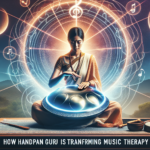The Pan Tribe Gathering is not just another cultural festival. It is a dynamic confluence of histories, traditions, and narratives from diverse ethnic groups that make up the Pan Tribe, known for their rich cultural tapestry and shared heritage. This extraordinary event spans several days and brings together people from near and far to celebrate and preserve their indigenous roots through storytelling, dance, music, and art. In this article, we will delve deep into the significance, activities, and personal stories shared at the Pan Tribe Gathering, offering a glimpse into this vibrant cultural festival.
The Essence of the Pan Tribe Gathering
The Pan Tribe Gathering is rooted in the timeless practice of community storytelling. For centuries, the Pan Tribe’s oral tradition has been the cornerstone of preserving history, passing down knowledge, and fostering a sense of community. The Gathering is an embodiment of these principles, advocating the preservation of cultural heritage in a rapidly modernizing world.
Each year, the Gathering becomes a fertile ground for cultural exchange, where different clans under the Pan Tribe umbrella come together to share their unique traditions and collaborate on communal projects. The event is not just about reflection but also about looking forward — encouraging younger generations to embrace and continue their rich heritage.
Stories from the Gathering
The heart of the Pan Tribe Gathering lies in its stories — each member brings tales that are deeply personal and universally resonant. Here are a few stories shared during the last Gathering that highlight the depth and diversity of this cultural mosaic:
The Legend of Amahoro
One of the most revered stories told at the Gathering is the Legend of Amahoro, a tale of peace and conflict resolution. According to the legend, Amahoro was a wise chieftain who united warring clans through his unparalleled diplomacy and deep respect for each clan’s heritage. His story is a poignant reminder of the importance of unity and understanding in maintaining peace.
Elders narrate this story with vivid details, emphasizing how Amahoro’s actions transcended mere political savvy. His spirit of inclusiveness and genuine care for his people serves as an enduring lesson for today’s generations grappling with division and unrest.
The Song of the River
Nakul, a young storyteller from the Pan Tribe, shared the Song of the River, a story passed down through his family for generations. The tale is about a magical river with healing properties, revered and protected by the Pan people. When outsiders threatened to exploit the river, the community rallied together, combining their knowledge and strength to protect their sacred resource.
Nakul’s performance was accompanied by haunting melodies played on traditional instruments, illustrating the integral role of music in Pan Tribe storytelling. The Song of the River is a vivid example of how the tribe’s connection to nature is deeply woven into their collective identity.
The Journey of Kiara
Kiara, an elder from the Pan Tribe, recounted her personal journey of self-discovery and cultural reclamation. Born during a period of significant socio-political upheaval, Kiara lost touch with her cultural roots early in life. Her story is one of perseverance and determination as she navigated through various challenges to reconnect with her heritage.
Kiara’s narrative resonated deeply with many attendees, particularly the younger members who often feel caught between modernity and tradition. Her story underscores the importance of understanding one’s history to truly understand oneself.
Activities at the Gathering
Beyond storytelling, the Pan Tribe Gathering is a vibrant celebration filled with diverse activities that highlight the tribe’s cultural richness. These activities are meticulously planned to ensure that they respect the authenticity of the traditions while making them accessible and engaging for all attendees.
Traditional Dance and Music
Traditional dance and music form the heartbeat of the Pan Tribe Gathering. Each clan showcases its unique styles, characterized by intricate rhythms, colorful costumes, and symbolic movements. These performances are not just art forms but are imbued with layers of meaning, often depicting historical events, spiritual beliefs, or everyday life.
Special workshops are also held where participants can learn these traditional dances and music styles, allowing them to actively engage with the culture.
Crafting and Artisan Markets
Artisan markets at the Gathering feature a plethora of handcrafted items, from intricately woven baskets and textiles to beautifully carved wooden sculptures. These markets serve as a space for local artisans to showcase their skills and for attendees to appreciate and purchase traditional crafts.
The crafting sessions are particularly popular, offering hands-on experiences in making traditional items. Participants are guided by master artisans, learning the techniques and significance behind each craft.
Culinary Traditions
Food is an integral part of the Pan Tribe’s cultural heritage. The Gathering includes a dedicated space for culinary traditions where attendees can sample a myriad of traditional dishes. Food preparation demonstrations and interactive cooking sessions are held, highlighting traditional methods and ingredients.
These culinary activities not only provide a sensory experience but also facilitate a deeper understanding of how food practices are intertwined with cultural identity and heritage.
Impact on the Community
The Pan Tribe Gathering has a profound impact on the community, fostering a sense of pride and belonging among its members. It serves as a powerful reminder of the tribe’s rich history and cultural wealth, reinforcing the importance of preserving these traditions for future generations.
For many, the Gathering is a transformative experience, offering a rare opportunity to reconnect with their roots and strengthen their sense of identity. It also plays a crucial role in educating outsiders, promoting cultural understanding and respect.
Conclusion
The Pan Tribe Gathering is a testament to the enduring power of tradition and community in an ever-changing world. Through storytelling, dance, crafts, and culinary arts, the Gathering not only celebrates the past but also paves the way for the future. It provides a unique platform for the Pan Tribe to showcase their rich cultural heritage, fostering unity and reinforcing the importance of preserving these age-old traditions. The stories, activities, and experiences shared at the Gathering leave an indelible mark on all who attend, ensuring that the legacy of the Pan Tribe continues to thrive for generations to come.
FAQs
1. What is the Pan Tribe Gathering?
The Pan Tribe Gathering is an annual cultural festival that brings together various clans of the Pan Tribe to celebrate and preserve their rich cultural heritage through storytelling, dance, music, crafts, and culinary traditions. It serves as a platform for cultural exchange and community building.
2. Why is storytelling important at the Pan Tribe Gathering?
Storytelling is a cornerstone of the Pan Tribe’s oral tradition, used to pass down history, knowledge, and cultural values across generations. At the Gathering, storytelling connects different clans, preserves the tribe’s rich heritage, and reinforces community bonds.
3. Can outsiders attend the Pan Tribe Gathering?
Yes, the Pan Tribe Gathering is open to outsiders who are interested in learning about and respecting the tribe’s cultural practices. The event promotes cultural understanding and fosters respect for the Pan Tribe’s traditions.
4. How does the Pan Tribe Gathering impact younger generations?
The Gathering plays a crucial role in engaging younger members of the Pan Tribe, encouraging them to embrace their cultural heritage. Through interactive sessions, performances, and storytelling, younger generations learn the significance of their traditions, ensuring their preservation.
5. What types of activities can attendees participate in at the Gathering?
Attendees of the Pan Tribe Gathering can participate in a variety of activities including traditional dance and music performances, crafting workshops, artisan markets, and culinary sessions. These activities provide immersive experiences, allowing participants to actively engage with the tribe’s cultural practices.





